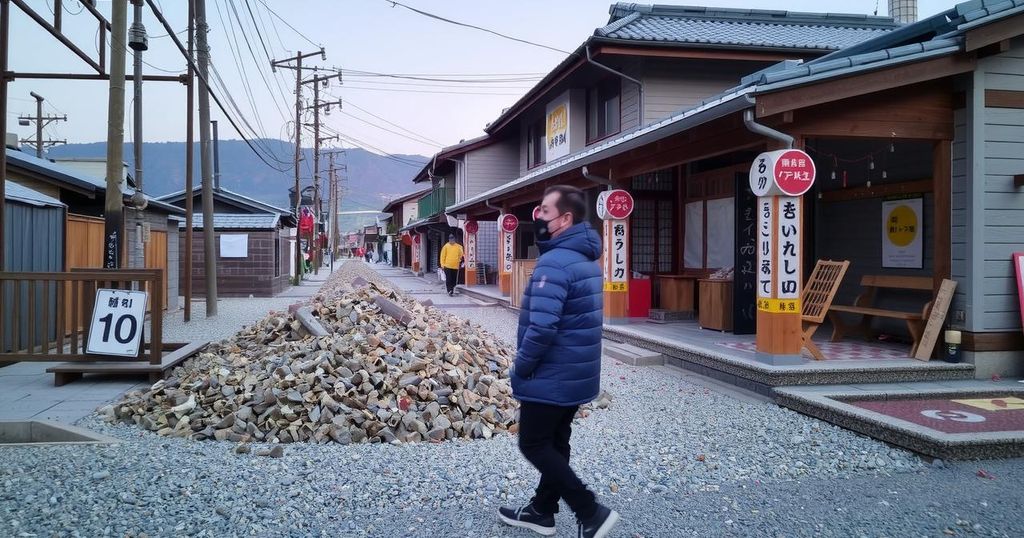A year after a devastating 7.5 magnitude earthquake struck Wajima, Japan, survivors face ongoing challenges including displacement, emotional distress, and slow reconstruction. Many live in temporary accommodations while grappling with fears of future disasters. The earthquake resulted in nearly 470 deaths and extensive damage, raising questions about the community’s future amid demographic decline.
In the aftermath of the powerful 7.5 magnitude earthquake that struck Wajima, Japan, on New Year’s Day last year, many residents have been forced from their homes into temporary units, facing uncertain futures. 83-year-old Sueko Naka embodies this struggle, having lost her ancestral home and now living with her family in a small dwelling, overwhelmed by the changes wrought by nature. The quake, among Japan’s deadliest, caused the loss of nearly 470 lives and widespread devastation, particularly in Wajima, where fires destroyed historic areas, and subsequent adverse weather further threatened recovery efforts. With ongoing aftershocks causing continued distress and displacement, more than 40,000 residents have been evacuated, and reconstruction has been frustratingly slow in the face of an existing demographic crisis in the region. The emotional toll is staggering, as families like Naka’s grapple with loss and uncertainty, questioning their future in an already declining population. Many survivors are concerned about their ability to rebuild lives and homes, and a palpable fear of recurring disasters lingers as the community navigates the long road to recovery.
The Noto Peninsula in Japan has experienced significant upheaval due to recent natural disasters, coupled with demographic challenges. The region, known for its rural charm, has seen its population decline as an aging demographic struggles against the backdrop of a once-thriving community. The major earthquake in question not only amplified immediate physical destruction but also exacerbated existing issues related to population sustainability and emotional resilience among survivors, highlighting the profound impact of natural calamities on local communities.
In summary, the earthquake that devastated Wajima serves as a poignant reminder of the fragility of life and community in the face of natural disasters. The ongoing recovery is fraught with challenges, including physical rebuilding, emotional healing, and the demographic concerns that complicate the future of a historically rich region. As families like Sueko Naka’s confront their uncertain futures, the community’s ability to adapt and revive in the wake of adversity remains a pressing concern, underlining the urgent need for support and resilience strategies in disaster-prone areas.
Original Source: www.taipeitimes.com






